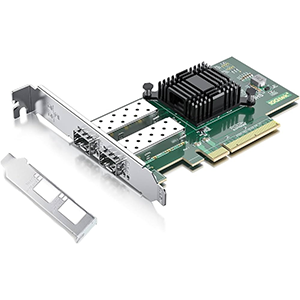Networks play a vital role in the modern information society. This article will focus on the concepts and characteristics of local area networks (LANs) and wide area networks (WANs). We will first explain what a computer network is and explain the role of networks in the information age. Next, we will define the characteristics of a local area network and describe its typical application scenarios.
Then, we will define the characteristics of a wide area network and explain its main application scenarios. Finally, we will focus on comparing the differences between LAN and WAN networks in terms of geographic coverage, network speed, network equipment and topology, and management and maintenance.
Basic definition of a network
A network is a communication platform consisting of interconnected computers, devices, and systems for data exchange and resource sharing. It includes various types of networks, such as local area networks (LANs), wide area networks (WANs), and the Internet, supporting information transfer and collaboration.
Definition of a computer network:
A computer network is a communication system formed by connecting multiple computers or other electronic devices to each other. It has the following basic characteristics:
(1) Connect multiple devices:
- The network consists of various computers, terminal devices, storage devices, etc.
- These devices are connected to each other through various physical or wireless links.
(2) Sharing of information and resources:
- The network can realize the sharing and exchange of information, data, applications and other resources.
- Users can access and use various information and services on the network.
In short, a computer network is a system that uses communication technology to interconnect multiple devices in order to share information and resources.
The status of the Internet in the information age:
Computer networks play a vital role in the modern information society, which is mainly reflected in the following aspects:
(1) Promoting social information exchange and collaboration:
- The Internet provides a channel for information transmission and exchange, accelerating the flow of information in society.
- The Internet also supports new applications such as remote collaboration and online education, enhancing people’s information interaction capabilities.
(2) Promoting technological innovation and industrial development:
- The Internet provides infrastructure for the research and development and application of various new technologies.
- The Internet has also spawned many emerging network-related industries, such as e-commerce and cloud computing.
In general, computer networks have penetrated into all areas of society and have become an indispensable infrastructure for the modern information society. The development of the Internet has not only improved people’s quality of life, but also promoted the overall informatization process and technological innovation of society, playing a key role in promoting the progress of the information age.
Local Area Network (LAN) Network
A local area network (LAN) is a network covering a limited geographical area, used to achieve high-speed data transmission and resource sharing between devices in the same location. It is usually used in home, office or campus environments, and has the characteristics of high bandwidth and low latency.
Characteristics of LAN:
A local area network (LAN) is a computer network with a small geographical range, which has the following typical characteristics:
(1) Small geographical coverage:
- A LAN usually covers a relatively small geographical area such as a building, a campus or an enterprise park.
- The physical distance between network devices is usually within a few hundred meters to a few thousand meters.
(2) Fast network speed:
- LAN uses high-speed wired or wireless transmission media, such as Ethernet, Wi-Fi, etc.
- Network transmission rate is usually high, reaching Gbps level.
(3) Relatively easy to manage and maintain:
- LAN has a small geographical range and a limited number of devices.
- Network management and troubleshooting are relatively simpler and more efficient.
Typical application scenarios of LAN:
LAN is widely used in the following typical scenarios:
(1) Internal information system of an enterprise:
- Employee office, production management, data sharing, etc. within an enterprise all rely on LAN.
- LAN ensures high-speed connectivity and secure operation of the enterprise’s internal information system.
(2) Campus or home network:
- In school, home and other scenarios, LAN is used to connect various terminal devices.
- Provide file sharing, Internet access and other services between internal users.
(3) Factory site automation:
- In the production workshops and assembly lines of the manufacturing industry, LAN is used to connect various automation equipment.
- Realize data exchange and remote monitoring and management between devices.
In short, LAN plays an important role in various scenarios such as enterprises, campuses, and homes due to its fast speed and easy management, supporting various application needs in today’s information society.
Wide Area Network (WAN) Network
A Wide Area Network (WAN) is a network that covers a wide geographical area, connecting different locations or networks. It is used for long-distance data transmission, supporting communication across cities, countries, or even the world, and often relies on public or private communication lines.
Characteristics of WAN:
A Wide Area Network (WAN) is a computer network that covers a wide geographical area. It has the following typical characteristics:
(1) Wide geographical coverage:
- The geographical scope of a WAN can cover a city, a country, or even the world.
- The distance of the connection can reach thousands of kilometers.
(2) Relatively slow network speed:
- Compared with a LAN, the transmission speed of a WAN is usually slower.
- Limited by line length and characteristics of transmission media.
(3) Requires dedicated line or router connection:
- WANs usually require dedicated lines, routers and other professional equipment for interconnection.
- Network structure and management are relatively more complex.
Main application scenarios of WANs:
WANs play an important role in the following typical scenarios:
(1) City or nationwide communications:
- WANs can be used to connect computer networks in different cities or regions.
- Achieve cross-regional information exchange and resource sharing.
(2) Connecting corporate branches in different locations:
- WAN can connect the corporate headquarters with the networks of various branches.
- Supports remote office, data sharing and other applications within the enterprise.
(3) Access to Internet services:
- WAN is an important infrastructure for connecting to the Internet.
- Individuals or enterprises access the Internet through WAN to obtain various online services.
In short, WAN plays a key role in scenarios such as connecting cities, corporate branches and the Internet with its wide geographical coverage, and is an indispensable infrastructure for the modern information society.
Comparison of LAN and WAN networks
LAN (Local Area Network) covers a small area, has fast speed and low cost, and is suitable for local device connection; WAN (Wide Area Network) covers a wide area, has slow speed and high cost, and is suitable for cross-regional communication. LAN is suitable for home and office, while WAN is suitable for connecting remote networks and global communication. There are obvious differences between Local Area Network (LAN) and Wide Area Network (WAN) in the following aspects:
Geographical coverage:
- Local Area Network (LAN) has a small geographical scope, usually covering only one building, campus or enterprise park, etc.
- Wide Area Network (WAN) has a wider geographical scope, which can cover a city, a country or even the world.
Network speed:
- Local Area Network (LAN) uses high-speed transmission media, and the communication speed is fast, which can reach Gbps level.
- Wide Area Network (WAN) has a relatively slow network speed due to its wide network range and limited transmission media.
Network equipment and topology:
- Local Area Network (LAN) uses LAN switches and routers and other devices for interconnection.
- Wide Area Network (WAN) requires the use of dedicated lines, WAN routers and other professional equipment for connection.
Management and maintenance:
- Local Area Network (LAN) has a small geographical range and a limited number of devices, so management and maintenance are relatively easier.
- Wide Area Network (WAN) has a wide network range and complex equipment, so management and maintenance are more cumbersome.
In general, there are obvious differences between Local Area Network (LAN) and Wide Area Network (WAN) in terms of application scenarios, performance characteristics and management requirements. LAN is more suitable for network applications within a small range such as within an enterprise or campus, while WAN is suitable for communication needs across cities or across the country. Both networks play important and different roles in the modern information society.
Summary
Rational selection of LAN or WAN network is the key to building an efficient and stable communication system. Our company has long focused on the research and development and application of network solutions and has rich practical experience. We can provide you with the most suitable LAN or WAN network solution according to your actual needs.
Whether you want to build an internal enterprise information system or need to connect branches distributed in different regions, we can tailor the best solution for you. Our network equipment uses industry-leading technology and has achieved excellent levels of performance, security and reliability. At the same time, our team of engineers will provide you with professional consulting and implementation support to ensure smooth network deployment and stable operation. Contact us now to learn more.
LAN and WAN FAQ
A LAN (Local Area Network) is a network that connects devices within a limited geographic area, such as a home, office, or campus. It allows for high-speed data transfer and resource sharing among devices that are physically close to each other.
A WAN (Wide Area Network) is a network that spans a large geographic area, such as cities, countries, or even continents. It connects multiple LANs and other networks over long distances, enabling communication across wider regions.
Geographic Coverage: LANs cover small, localized areas, while WANs cover broader, dispersed regions.
Speed: LANs usually offer higher speeds due to shorter distances, whereas WANs may have lower speeds due to longer distances and varying transmission technologies.
Ownership and Management: LANs are often privately owned and managed, while WANs may involve multiple organizations and service providers.
LANs are commonly used for internal office networks, home networks, educational institutions, and local file sharing, printing, and internet access within a limited area.
WANs are used for connecting multiple office locations of a business, providing internet access, facilitating remote work, and linking networks across different geographic regions.
LAN technologies include Ethernet (wired), Wi-Fi (wireless), and token ring. Ethernet is widely used for wired connections, while Wi-Fi provides wireless connectivity.
WAN technologies include leased lines, MPLS (Multiprotocol Label Switching), VPNs (Virtual Private Networks), and satellite links. These technologies enable long-distance connections and data transmission.
LANs are connected through local networking equipment such as switches and routers. WANs connect multiple LANs and networks using routers, modems, and other wide-area networking equipment.
LAN Security: LANs usually have more controlled environments, allowing for robust internal security measures such as firewalls and access controls.
WAN Security: WANs may face greater security challenges due to their broad scope and the involvement of multiple parties. Security measures include encryption, firewalls, and VPNs to protect data during transmission.
Yes, a LAN can be connected to a WAN through a router or gateway that links the local network to the broader network. This connection enables devices on the LAN to communicate with devices on the WAN and access external resources like the internet.





